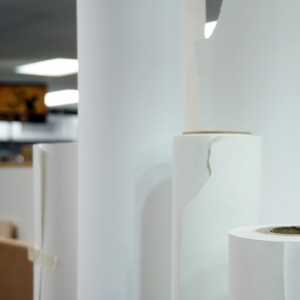Canvas: The Wonder Fabric With a Thousand Uses
You hear the word “canvas” and it’s hard not to immediately think of French artists lugging their easels through fields in search of the perfect landscape, or artistic wild men slinging paint onto canvas-bedecked floors in the fashion of Jackson Pollack. Maybe you remember all the times you’ve said “Nice job, grandma” as she shows you her latest painting of flowers, or maybe you’re just reminded of all the difficulty you went through trying to stretch your own canvas for that fast-approaching art project.
The word is almost inextricably linked with art, and yet remarkably, the durable material wasn’t even widely used by artists until the 15th century. Because of the unique way that canvas is woven, it creates a strong material that serves a variety of purposes. We’ll take a look at a few other instances of canvas use, some perhaps surprising, to appreciate the versatility of this common painting surface.

We would never suggest trying to float a river atop one of our custom-stretched canvases, but canvas does happen to make an excellent material for canoes. Not entirely dissimilar from our process of stretching canvas, a waterproofed canvas is stretched taut over the wooden hull of the canoes. These wood-and-canvas canoes were a favorite for President Teddy Roosevelt on his river expeditions, and are still widely in use today.
Even before its use in canoes, canvas had a long history in the maritime industry. For hundreds of years, canvas has been the material of choice for sails; in fact, the abundance of canvas sails in Renaissance Venice is what led to artists using the material in the first place. The thick and hardy weave holds up well to the often-rough conditions of the sea, weathering storms and sun both. Constructing canvas sails was once a highly valued art, and to this day sailors are still taught sewing techniques in order to patch their sails with spare canvas.
Even if you don’t spend much time on boats, there are plenty of uses for canvas on dry land. If you’ve ever bounced on a trampoline, chances are you were jumping on canvas. Now we of course would rather you not order our custom-stretched canvases only for bouncing and back-flips, but stretched tightly enough, canvas can rocket you into the air. Because canvas itself is not elastic, however, it needs to be connected to the trampoline by tightly-wound springs that provide all the bounce power.

While advances in technology have made canvas clothing somewhat uncommon these days, you can still find it where there’s a need for a durable material. Many martial arts uniforms include items made of canvas, where it holds up well against barrages of punches and kicks. Some footwear, such as dock shoes and field boots, also often use canvas to provide durability in harsh conditions where heavier shoes would be impractical. Canvas is also a common material for patio umbrellas and awnings.
Canvas really is a dynamic material, and it really is everywhere; you probably even have canvas in your home. A backpack, a traveling bag, a lampshade, a rug; anything made of fabric can potentially be made of canvas. We think canvas is an incredible thing, with a rich and interesting history that only grows with each passing day. Perhaps, after reading a bit about the many uses for this wonder fabric, you might feel the same way we do about canvas.